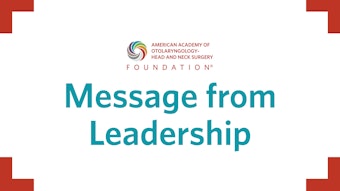Update on Therapies and Management of Food Allergies
The primary therapeutic strategy to manage food allergy is avoidance of the culprit allergen. However, now active management options, such as food immunotherapy, offer patients alternatives.
Cecelia Damask, DO, Chair, Allergy, Asthma, and Immunology Committee

For me, time spent with my family and friends over good food and conversation is the best way to feel fully engaged in the moment. Food is a huge part of living la dolce vita. But what if the food you eat could kill you, even accidentally?

The prevalence of childhood peanut allergy in the United States has been rising, with reported rates of 0.4% in 1997 and 2.2% in 2016.1,2 During this same period, the guideline recommendations for introducing peanut-containing products to infants changed several times.
In 2000, the American Academy of Pediatrics (AAP) recommended to avoid feeding peanut-containing products to children until 3 years of age. In 2008, the recommendations were revised because there were not significant data to recommend delaying. Despite this, many experts continued to recommend delaying introduction. In 2013, a landmark article on the Learning Early About Peanut Allergy (LEAP) study was published in the Journal of Allergy and Clinical Immunology.3 The study demonstrated that early introduction of peanuts decreased the frequency of peanut allergy by 80% among children at high risk for developing it. Subsequently, the National Institute of Allergy and Infectious Diseases (NIAID) released Addendum Guidelines in 2017 encouraging the early introduction of peanuts, especially in high-risk infants, after testing and discussion with physician.4 The American College of Allergy Asthma and Immunology (ACAAI), American Academy of Allergy, Asthma & Immunology (AAAAI), and Canadian Society for Allergy and Clinical Immunology put out guidance in the form of a consensus document in 20215 further clarifying that screening before introduction is not required but may be preferred by some families.
The primary therapeutic strategy in the management of food allergy remains avoidance of the culprit allergen; there is currently no cure for food allergy. Prompt administration of epinephrine is recommended to treat anaphylaxis should accidental exposure occur.

Peanut allergen-dnfp, a powder, was approved by the U.S. Food and Drug Administration (FDA) in 2020 for children ages 4 to 17 years. It works by desensitizing patients by gradually increasing the dosage of peanut exposure. OIT does carry significant risk of allergic reactions and administration can be burdensome as it requires daily dosing (possibly indefinitely) with dosing restricted around exercise and illness. Multiple office visits (11+ visits during a six-month build-up period) are required.
OUtMATCH is a three-stage phase 3 multicenter, randomized double-anonymized placebo-controlled trial.6 Stage 1 has been completed, which consisted of an omalizumab arm (dosed based on IgE level and patient weight) and a placebo arm over 16 to 20 weeks. The study population included participants aged one to 55 years with a peanut allergy and an allergy to at least two of six other foods. The primary outcome was the number of participants able to consume > 600 mg peanut protein without dose-limiting symptoms during the food challenge at the end of stage 1. A total of 67% of those treated with omalizumab tolerated peanut (consumption of > 600 mg peanut protein) versus 7% of those receiving placebo. Omalizumab also improved tolerance of other foods (milk, egg, cashew) versus placebo.7
In February 2024, the FDA approved omalizumab for IgE-mediated food allergy in adults and children (age 1 year and up) for the reduction of allergic reactions (Type I), including reducing the risk of anaphylaxis, that may occur with accidental exposure to one or more foods.7 Patients who receive omalizumab must still continue to avoid foods to which they are allergic, and they still need to have an epinephrine auto-injector.
This newly approved indication for omalizumab provides a treatment option to reduce the risk of allergic reactions in patients with IgE-mediated food allergies. It will not eliminate their food allergy, nor will it allow patients to consume their food allergen freely, but repeated use of omalizumab will help reduce the risk of reactions if accidental exposure does occur. Another potential benefit is that this may help to decrease the anxiety from living a life consumed by fear of accidental exposure to their food allergen—one more step toward living la dolce vita.
References
- Gupta, RS, Warren, CM, Smith, BM, Blumenstock, JA, Jiang, J, Davis, MM, and Nadeau, KC. "The public health impact of parent-reported childhood food allergies in the United States." Pediatrics 142, no. 6 (2018): e20181235.
- Gupta, RS, Warren, CM, Smith, BM, Jiang, J, Blumenstock, JA, Davis, MM, Schleimer, RP, and Nadeau, KC. "Prevalence and severity of food allergies among US adults." JAMA Network Open 2, no. 1 (2019): e185630-e185630.
- Du Toit, G, Roberts, G, Sayre, PH, Bahnson, HT, Radulovic, S, Santos, AF, Brough HA, et al. “Randomized Trial of Peanut Consumption in Infants at Risk for Peanut Allergy.” New England Journal of Medicine (2016) 372, no. 9 (n.d.): 803–13. https://doi.org/10.1056/NEJMoa1414850.
- Togias, Alkis et al. “Addendum Guidelines for the Prevention of Peanut Allergy in the United States: Summary of the National Institute of Allergy and Infectious Diseases–Sponsored Expert Panel” Journal of the Academy of Nutrition and Dietetics, 117, no. 5 (2017): 788 – 793
- Fleischer, DM, Chan, ES, Venter, C, Spergel, JM, Abrams, EM, Stukus, D, Groetch, M, et al. "A consensus approach to the primary prevention of food allergy through nutrition: guidance from the American Academy of Allergy, Asthma, and Immunology; American College of Allergy, Asthma, and Immunology; and the Canadian Society for Allergy and Clinical Immunology." The Journal of Allergy and Clinical Immunology: In Practice 9, no. 1 (2021): 22-43.
- Wood, RA, Chinthrajah, RS, Rudman-Spergel, AK, Babineau, DC, Sicherer, SH, Kim, EH, Shreffler, WG, et al. "Protocol design and synopsis: omalizumab as monotherapy and as adjunct therapy to multiallergen OIT in children and adults with food allergy (OUtMATCH)." Journal of Allergy and Clinical Immunology: Global 1, no. 4 (2022): 225-232.
- Wood, RA, Togias, A, Sicherer, SH, Shreffler, WG, Kim, EH, Jones, SM, Leung, DYM, et al. "Omalizumab for the Treatment of Multiple Food Allergies." New England Journal of Medicine (2024).




















